10 questions: O-RING grooves
#1 What are O-ring grooves?
O-ring grooves are specially shaped recesses in which O-rings are placed to create a seal between two parts.
They are crucial to the efficiency of the seal as they protect the O-ring from overstretching and crushing by providing a precise space to accommodate it.
The design of the groove must be precise to ensure that the O-ring can exert a suitable sealing force under compression without being damaged. The groove dimensions depend on the O-ring size and the area of application.
| Feature | Property description |
|---|---|
| Function | Placement and protection of O-rings for sealing between two components |
| Importance | Protection against overstretching and crushing of the O-ring |
| Design | Must be precise to ensure effective sealing and O-ring protection |
| Dependence | Dimensions based on O-ring size and application |
REQUEST O-RINGS QUICKLY AND EASILY?
Almost any dimension available
Offer received in record time
No minimum order quantities or minimum item values
One contact for all concerns
#2 What types of O-ring grooves are there?
With O-ring grooves, a distinction is mainly made between rectangular grooves, trapezoidal grooves and triangular grooves. Rectangular grooves are the standard shape and provide a simple, effective seal for a wide range of applications.
Trapezoidal grooves are advantageous when the Shore hardness of the O-ring must be taken into account; for an O-ring with 90 Shore A, it is recommended that the width of the trapezoidal groove be slightly larger to allow adequate compression without excessive stress.
Triangular grooves offer the advantage of filling almost 100% of the space, which eliminates gaps for bacteria or deposits and makes them particularly suitable for hygienic or sterile applications.
| Groove type | groove description | Advantage | Special feature |
|---|---|---|---|
| Rectangular groove | Standard shape, universally applicable | Simple design and effective sealing | Versatile for many applications |
| Trapezoidal groove | Adapted to the shore hardness of the O-ring | Enables compression without excessive stress | Adjust width for hard O-rings (90 Shore A) |
| Triangular groove | Fills almost 100% of the space | No gaps for bacteria/deposits | Ideal for hygienic or sterile applications |
Rectangular groove
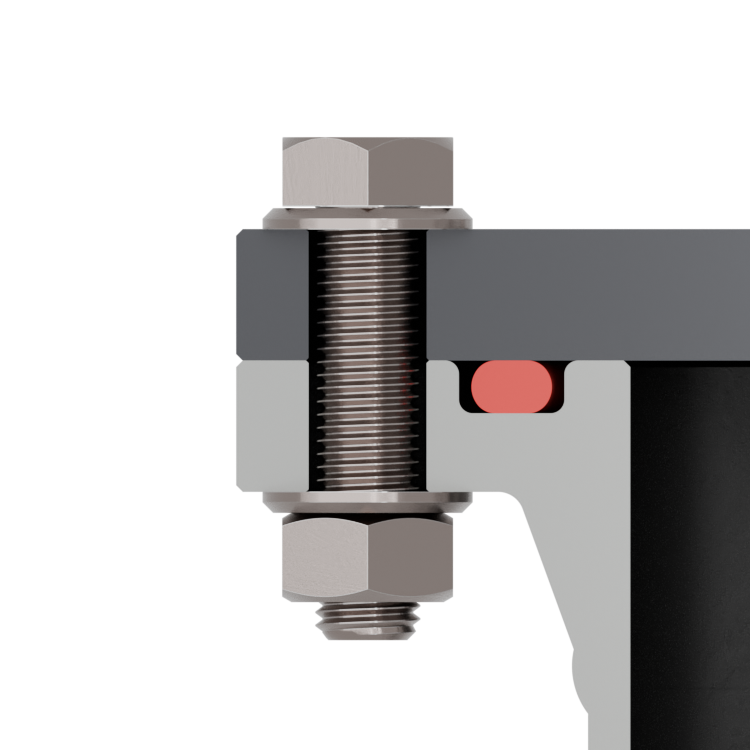
Trapezoidal groove
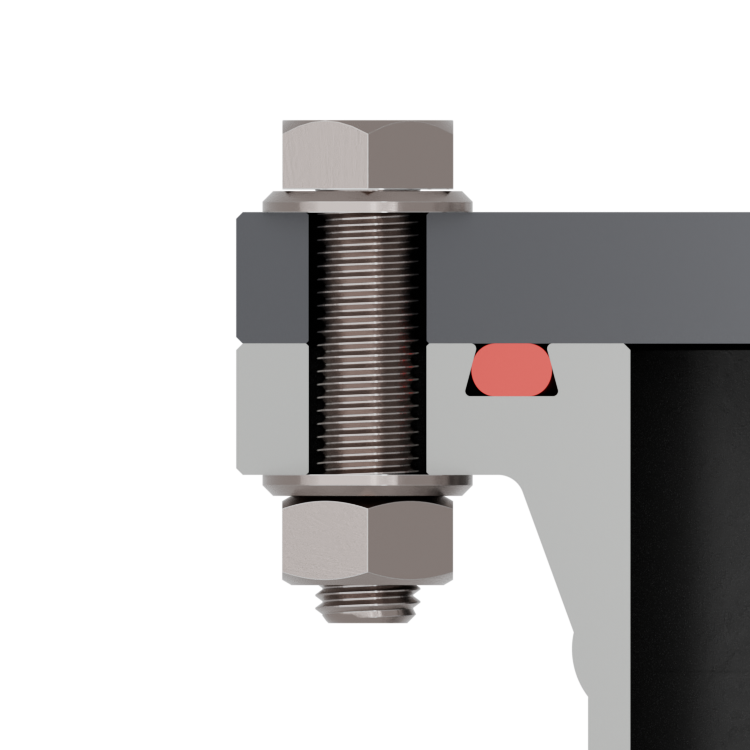
Triangular groove
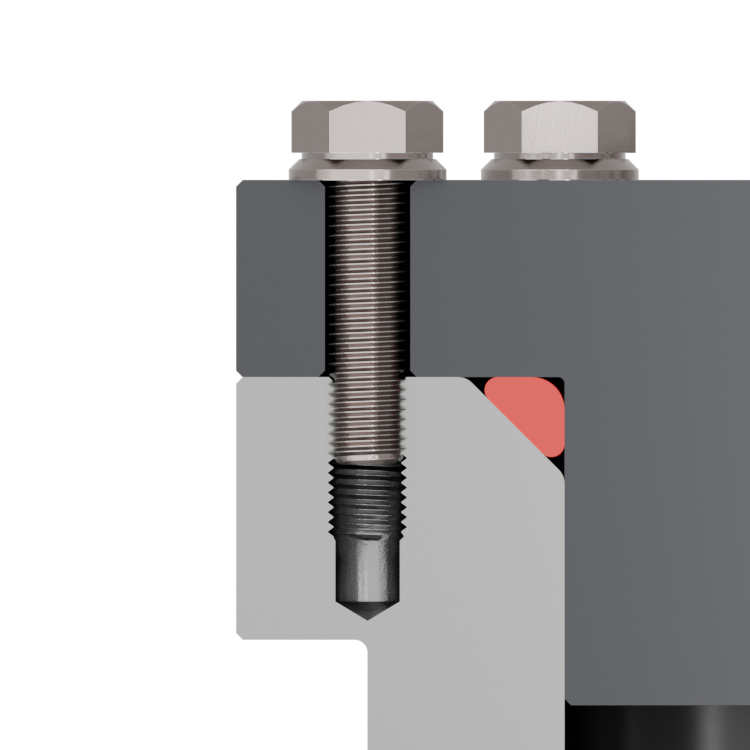
#3 Where are O-ring grooves used?
O-ring grooves are widely used in various industries where reliable sealing is required. They are used in the automotive industry for engine and transmission seals, in the aerospace industry for hydraulic systems, in medical technology for devices that carry liquids or gases, as well as in the general mechanical engineering and process industries. O-ring grooves are also indispensable in water-bearing systems and in the oil and gas industry for sealing under high pressures and temperatures. Their versatility and efficiency make them a preferred solution for many sealing tasks.
| Industry | Area of application |
|---|---|
| Automotive | Engine and transmission seals |
| Aerospace | Hydraulic systems |
| Medical technology | Device seals |
| Mechanical engineering | General sealing tasks |
| Oil and gas | Sealing under high pressures and temperatures |
| Water drainage | System seals |
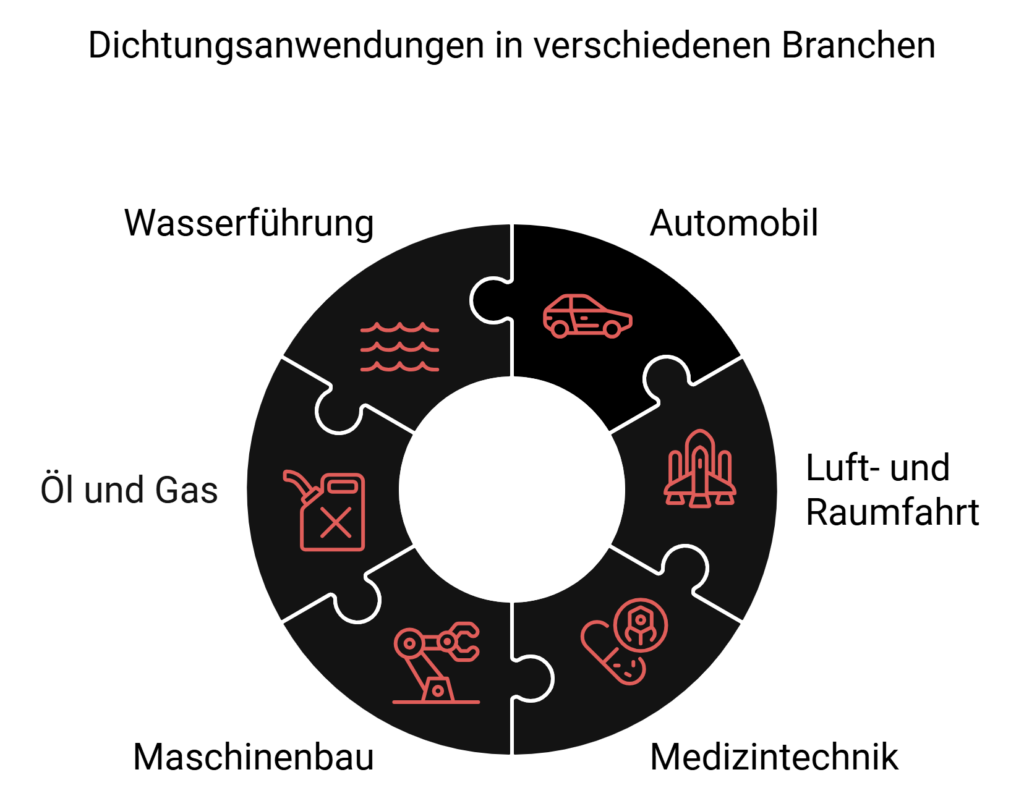

#4 Which compression is optimal for O-rings?
The optimum compression for O-rings varies depending on the application and material type. For standard O-rings, the recommended compression range is between 15 and 30% to ensure an efficient seal.
For FFKM (perfluoroelastomer) O-rings, a slightly lower compression rate of 10-20% is recommended in order to make optimum use of the special properties of the material.
For dynamic seals where the O-rings are subject to movement, the compression range can be set wider, from 5 to 25%. These adjusted ranges take into account the different requirements for sealing efficiency and material load.
| O-ring type | Recommended compression range |
|---|---|
| Standard O-rings | 15-30% |
| FFKM O-rings | 10-20% |
| Dynamic sealing | 5-25% |
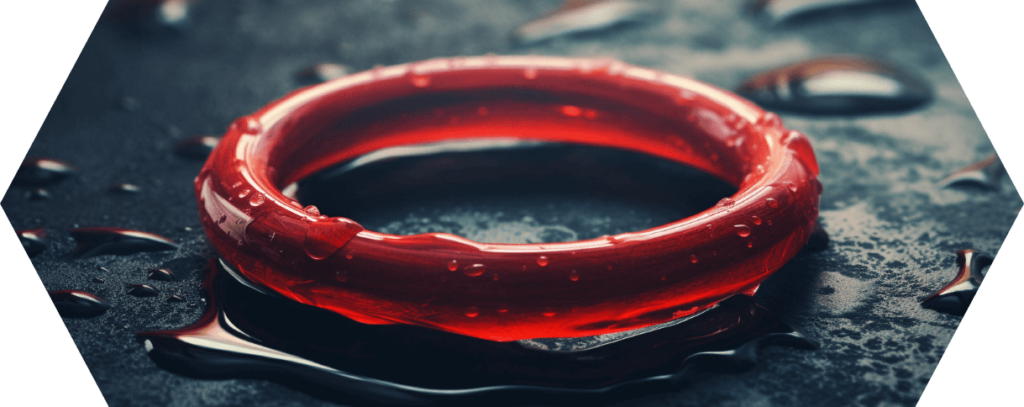
#5 How much free space should there be in the groove after grouting?
After pressing an O-ring, there should be about 15-20% free space in the groove to ensure optimum function and durability of the seal under different operating conditions.
This clearance rate may seem high at first, but it is crucial to allow the O-ring to expand with increasing temperature, as O-rings increase in volume with increasing temperature.
Sufficient groove clearance is essential, especially when used close to the maximum temperature limits, such as with FKM (fluororubber), which can be used up to 200°C.
Correct consideration of the free space in the groove design, particularly taking into account the temperature conditions, is therefore essential to ensure a permanently secure and effective seal.
| Aspect | Aspect Description |
|---|---|
| Recommended clearance | 15-20% after grouting |
| Significance | Enables O-ring expansion with temperature increase |
| Temperature consideration | Particularly important in maximum temperature ranges |
| Material example | FKM (fluororubber) up to 200°C |
| Design note | Sufficient groove clearance is crucial for the function and durability of the seal |

#6 How high may the O-ring elongation be in the short and long term?
The permissible elongation of O-rings varies depending on the material and operating conditions. For standard elastomer O-rings, an elongation of up to 50% is permissible during installation, while the permanent elongation should not exceed 6%.
In contrast, FEP (fluoroethylene propylene) coated O-rings may only be stretched up to 3% during assembly, with a maximum permanent elongation of 1%.
In dynamic applications, where O-rings are exposed to regular movements or alternating loads, the elongation should not exceed 3%.
Increased elongation can reduce the cord thickness of the O-ring, which in turn impairs the compression and thus the sealing effectiveness.
| O-ring type | Maximum elongation during assembly | Maximum permanent elongation |
|---|---|---|
| Standard O-rings | 50% | 6% |
| FEP coated | 3% | 1% |
| Dynamic use | see above | 3% |
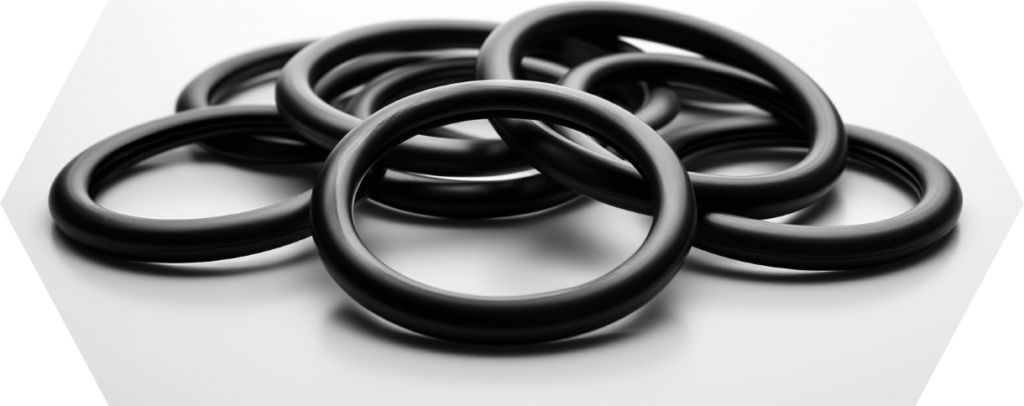
#7 How do I design the inside diameter correctly?
The correct dimensioning of the inside diameter of an O-ring depends on the operating conditions, in particular on whether and in which direction pressure is exerted.
Without pressure, the inner diameter of the O-ring is best designed on the inner diameter or in the middle of the groove. If the system is under pressure from the inside, the O-ring should be designed on the outside diameter, taking into account a slight compression of 0-3%.
This compression helps to press the O-ring against the groove wall and achieve an effective seal. For system pressure from the outside, the design should be made on the inside diameter, also with a slight preload of 0-3%. This preload ensures that the O-ring provides a good seal even under external pressure.
| Operating condition | Design location of the inside diameter | Recommended adjustment |
|---|---|---|
| Without pressure | On the inside diameter or in the middle of the groove | No specific adjustment necessary |
| System pressure from inside | On the outside diameter | 0-3% compression |
| System pressure from outside | On the inside diameter | 0-3% preload |
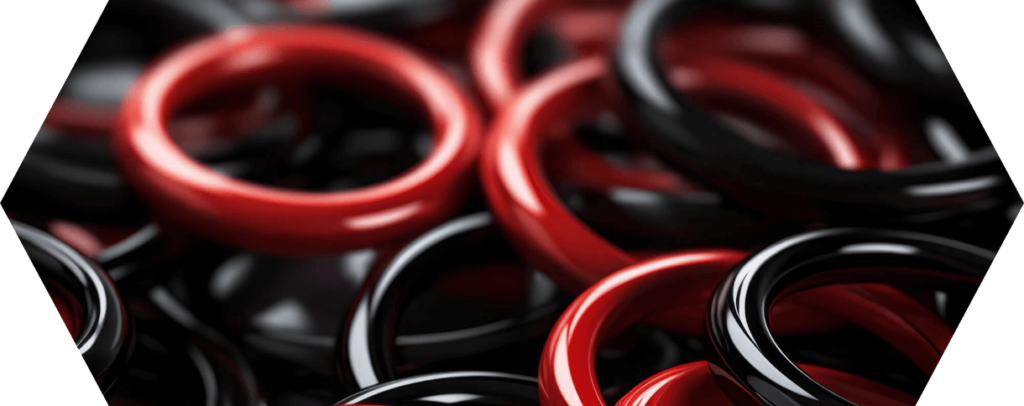
#8 How do I correctly lay out a groove for a PTFE O-ring?
Special care must be taken when designing a groove for a PTFE (polytetrafluoroethylene) O-ring, as PTFE O-rings can only be minimally compressed and stretched due to their material properties.
The inside diameter of the PTFE O-ring should correspond to the inside diameter of the groove to ensure a correct fit. It is important to note that PTFE O-rings should preferably be used as flange seals, where the requirements for extensibility and compressibility are minimal.
The groove design for a PTFE O-ring aims to fill the groove almost 100% with the O-ring to ensure that there are no empty spaces that could lead to leaks. This design maximizes sealing efficiency and prevents material from being over-deformed under pressure.
| Aspect | Design guideline |
|---|---|
| Inside diameter | Keep the same as the groove inside diameter |
| Field of application | Preferably as a flange gasket |
| Groove filling | Almost 100% filling to avoid empty spaces |
| Special features of the material | Take into account the minimal stretchability and compressibility of PTFE |
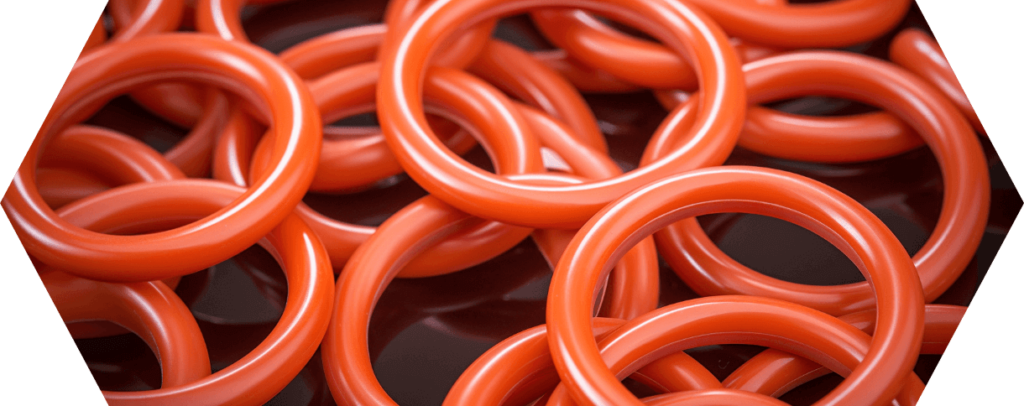
#9 How are sealing gap, system pressure and O-ring hardness related?
The relationship between sealing gap, system pressure and the hardness of the O-ring is critical to the effectiveness of the seal. The choice of O-ring hardness plays an important role, as harder O-rings are better suited to high pressures by improving resistance to gap extrusion.
As the system pressure increases, the sealing gap must be adjusted accordingly to ensure the integrity of the seal. At extremely high pressures, the use of support rings may be necessary to prevent gap extrusion.
Harder O-rings can reduce the tendency to extrude, but it is important to find the balance as O-rings that are too hard can make assembly difficult or result in an inadequate seal.
| System pressure | Sealing gap design | O-ring hardness | Measures against gap extrusion |
|---|---|---|---|
| Low | Larger sealing gap possible | Softer O-rings possible | Not absolutely necessary |
| Medium | Smaller sealing gap required | Medium to high hardness | Use of support rings on one side |
| High | Minimal sealing gap | High hardness preferred | Use of support rings on both sides |

#10 At which temperatures and media do the table values of a groove design apply?
The values given in tables for groove design generally apply to standard conditions, i.e. when used in air and at room temperature. Each specific medium and each deviation from room temperature can significantly influence the behavior of an O-ring and thus place new demands on the groove design.
Due to their chemical composition, different media can affect the materials of the O-ring in different ways, which can lead to expansion, contraction or chemical degradation.
Similarly, a change in operating temperature can change the physical properties of the O-ring, such as elasticity and hardness, which in turn affects the required size and shape of the groove.
In some cases, this may mean that more or less space is required in the groove to ensure optimum sealing performance.
| Operating condition | Effects on O-ring | Adaptation of the groove design |
|---|---|---|
| Standard (air, room temperature) | Basic reference for design values | No adjustment required |
| Changed medium | Chemical interaction can influence material | Adapt material selection and groove design |
| Deviating temperature | Changes the elasticity/volume of the O-ring | Adjust groove size and shape accordingly |
“I am convinced that we should share our knowledge with the world. I hope I have been able to answer all your questions. If you have any further questions, please feel free to contact us at any time. We will be happy to help you.”

Lord of the O-rings
Author of the Sealing Academy
